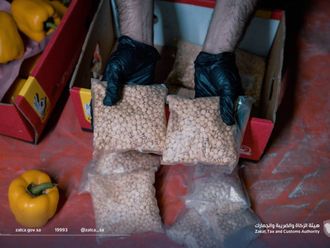SINGAPORE: Saudi Arabia’s sale of a spot crude cargo to an independent Chinese refiner marks a new phase in the turf war for dominance over Asia’s oil market and sends a strong message to its rivals Russia and Iran: the fight for market share is on.
State-owned Saudi Aramco, the world’s biggest oil exporter, this month sold 730,000 barrels of crude for June-loading to Chinese refinery Shandong Chambroad Petrochemicals, one of about 20 independent refineries nicknamed “teapots.” This is Aramco’s first spot sale to a teapot.
Aramco typically sells its crude through contracts of one year or longer, and under an Official Selling Price (OSP), rather than in spot trades.
While it has occasionally sold spot cargoes, for instance to European and Indian refiners, this is the first time it sold on a spot basis to a non-state Chinese refiner, demonstrating new sales nimbleness.
“The Saudis are essentially showing more flexibility in order to tap into that market as it fights for market share. It points to a more creative and less rigid marketing strategy,” said Virendra Chauhan, analyst at Energy Aspects in Singapore.
Aramco sold Shandong Chambroad a cargo, including Arab Heavy crude, at a differential to the Oman/Dubai benchmark price, said an industry source familiar with the matter.
The Arab Heavy May OSP was set at a $3.65 (Dh13.40) per barrel discount to Oman/Dubai.
The shipment moved out of Aramco’s storage site on the Japanese island of Okinawa that it operates as protection against supply disruptions and to react quickly to short-term demand.
Russia has filled most of the surging demand from China’s teapots, most of which were only allowed last year to import crude, pushing it to China’s biggest oil supplier in March and in four separate months in 2015, nudging aside the Saudis.
“For the Saudis, offering a spot cargo to a teapot signals they want to bite back at the Russians, who have supplied most of the demand by the rising teapots,” said a senior trader who has done deals with Saudis and Chinese importers.
“And it tells other producers, Iran in particular, that the Saudis are willing to play hard ball in the rush for Asia’s market share.”
Knighthood for teapot
Iran, freed from crippling sanctions in January, boosted exports in February to Asia’s four biggest oil buyers by 24.6 per cent from a year ago to 1.28 million barrels per day (bpd), government and tanker-tracking data showed.
Iran has increased its production to 1.9 million bpd, up from just over 1 million bpd in January, and plans to reach the pre-sanction level of 4 million bpd as soon as possible.
Other sources said Aramco’s move was a test to explore whether it could start a long-term relationship with China’s teapots.
“This for now is a one-off test of the teapot’s interest and its technical ability to process Saudi oil,” said a Beijing-based trading official with knowledge of Aramco’s marketing.
Neither Saudi Aramco nor Shandong Chambroad Petrochemicals were available for comment.
Chambroad’s deal with Aramco is a major win for a teapot, which usually lack the credit ratings needed to sign long-term international contracts.
Major oil producers have shunned teapots after several deals fell through within months of them entering the market.
“The deal gives them access to Aramco supplies,” said a person familiar with the deal. “That’s like a knighthood for the teapot.” Oil producers are scrambling to find buyers as supplies still outstrip demand, causing prices to drop 70 per cent between mid-2014 and early 2016.
“It is obvious that there is a major turf war going on in the crude market,” said an oil tanker broker.










